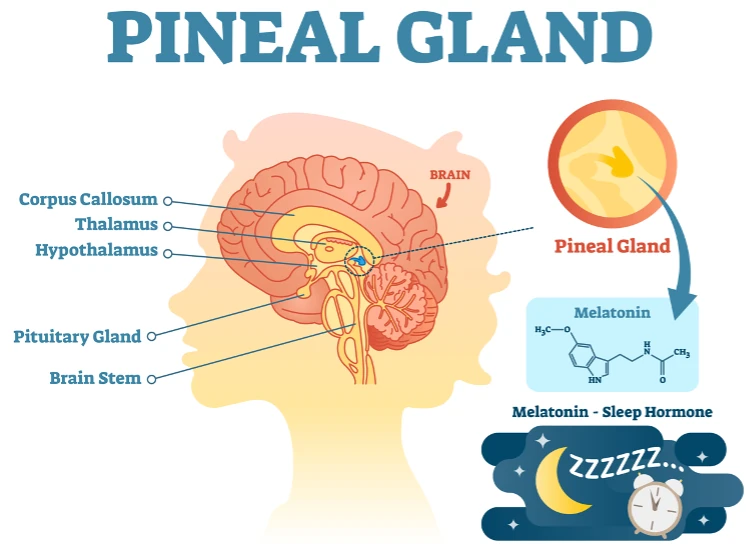The importance of a good night’s sleep cannot be overstated in the hustle and bustle of our daily lives, where time is often a precious commodity. Sleep, constituting approximately one-third of our lives, is a cornerstone of overall health and well-being. The position in which we choose to sleep can significantly influence the quality of our rest, affecting factors such as spinal alignment, snoring, and even facial wrinkles. This article explores the complexities surrounding the best sleeping position, exploring the three primary positions—side, back, and front—and providing an exhaustive guide to help readers optimise their sleep based on individual health considerations.
What is the best sleeping position?
The quest for the ideal sleeping position is intricate and deeply personal, contingent upon various health factors. Three primary sleeping positions; side, back, and front, all offering distinct advantages and drawbacks. Understanding these positions and their effects is crucial for tailoring sleep habits to individual needs.
Sleeping on your side
Approximately 74% of people are side sleepers, making it the most prevalent sleeping position. Side sleeping involves lying on one’s side, often with legs slightly bent. It is a popular choice for comfort, particularly among pregnant individuals.
Key benefits of sleeping on your side
Boosts brain health: Opting for a side sleeping position can positively impact brain health. This is attributed to the potential clearance of interstitial waste from the brain, a process believed to be more effective on your side when compared to back or stomach sleeping. While initial studies on rodent’s brains have suggested a connection between side sleeping and a reduced risk of Alzheimer’s, Parkinson’s, and other neurological diseases, it is crucial to note that further research on humans is necessary to confirm these findings.
Reduced snoring: Sleeping on your side stops your tongue from falling into your throat and partially blocking your airway. This position may alleviate snoring, making it beneficial for those with mild sleep apnoea. If side sleeping doesn’t alleviate your snoring or you suspect you have untreated sleep apnoea, then it is important to see a healthcare professional who can help tailor management options specific to your symptoms.
Is one side better than the other?
Left side: Research suggests that sleeping on your left side plays a role in aiding digestion. The stomach’s natural position is on the left side, where it can digest food more effectively. Gravity helps the waste travel from the small intestine to the large intestine, helping prepare you for a trip to the toilet in the morning! Sleeping on your left side may also alleviate acid reflux and heartburn by preventing stomach acid from flowing back into the oesophagus. It is particularly beneficial for pregnant individuals. Sleeping on the left side enhances blood flow to the womb as the foetus grows, contributing to overall maternal well-being.
Right side: Right-sided sleeping may worsen acid reflux symptoms.
Drawbacks of sleeping on your side
Shoulder and Hip Pain: Some individuals may experience shoulder or hip pain due to pressure points.
Wrinkles: Over time, side sleeping may contribute to facial wrinkles, particularly on the side most frequently pressed against the pillow.
How to sleep better on your side
Pillow Support: Use a supportive pillow to maintain proper spine alignment. Investing in a memory foam or contour pillow can provide targeted support for the neck and shoulders, reducing strain. For those with hip pain, experimenting with different pillow placements or opting for a mattress that provides optimal support can significantly affect sleep quality.
Leg Pillow: Place a pillow between your knees to reduce hip strain and promote comfort.
While the benefits of side sleeping are compelling, it’s essential to acknowledge the adjustment period that may accompany a shift in sleeping position. Individuals accustomed to sleeping on their back or front may initially find side sleeping uncomfortable. Patience is crucial during this transitional phase, and implementing gradual changes, such as using a body pillow for additional support, can ease the adjustment period.
Sleeping on your back
Back sleeping is favoured by around 10 to 15% of people. Back sleeping involves lying on the back with arms at the sides; healthcare professionals often recommend it.
Key benefits of sleeping on your back
Potential Alleviation of Shoulder Discomfort: For individuals prone to shoulder aches, sleeping on their side or stomach can sometimes lead to neck and shoulder constriction, resulting in discomfort. Adopting a back sleeping position facilitates even weight distribution, alleviating stress on shoulder muscles. Specifically, lying on your back with arms positioned down at your sides may help prevent musculoskeletal pain.
Tension Headache Relief: Factors such as stress, jaw clenching, prolonged phone use, and stomach sleeping can strain the muscles at the back of the neck, leading to tension headaches. Back sleeping aids in maintaining a neutral neck position, potentially relieving the discomfort associated with tension headaches.
Enhancement of Spinal Alignment: Other sleeping positions may induce neck and back pain due to improper spinal alignment. Opting for back sleeping, coupled with a supportive pillow, helps maintain a more neutral position for the neck, head, and spine, potentially reducing discomfort.
Sinus Drainage Promotion: Back sleeping, with the right pillow support, may facilitate the drainage of sinus build-up during the night, preventing the discomfort of waking up congested. This can particularly benefit individuals dealing with night-time sinus issues or congestion.
Prevention of Facial Skin Irritation: Sleeping on the stomach or side often involves prolonged contact between the face and the pillow, potentially leading to skin breakouts. Back sleeping is recommended by experts as it minimises contact with residual oils and dirt on the pillow, thus aiding in preventing skin irritations.
Potential Reduction in Wrinkles and Creases: Continuous contact between the face and pillow can contribute to the development of deeper wrinkles over time. Back sleeping offers a solution by reducing facial contact with the pillow, potentially improving skin appearance during sleep.
Drawbacks of sleeping on your back
Discomfort for Pregnant Individuals: For pregnant individuals, back sleeping is generally not recommended in the later stages of pregnancy. This is due to the potential for the womb to compress the vena cava, a large blood vessel that carries blood back to the heart. This compression can reduce blood flow to the heart and may lead to dizziness or a decrease in blood pressure. Opting for left sided sleeping with the assistance of a pregnancy pillow is considered a better alternative.
Snoring: Snoring is a common concern for back sleepers, as the tongue and soft palate may collapse to the back of the throat, obstructing the airway. If loud snoring is a concern, particularly in terms of disturbing others, exploring different sleeping positions other than back sleeping may be a preferable option. Individuals can also experiment with different pillow heights or consider positional therapy devices that encourage side sleeping.
Sleep Apnoea: Back sleeping is known to exacerbate sleep apnoea symptoms. This is attributed to the potential forward falling of the chin, which can hinder breathing. Alternative sleeping positions, such as side sleeping, may benefit those with sleep apnoea.
Exacerbating Chronic Lower Back Pain: Individuals experiencing increased pain while lying on their back may find relief by transitioning to a side sleeping position.
How to sleep better on your back
Supportive pillow: Use a pillow that opens up your airways and provides maximum comfort by elevating your head and shoulders slightly above the rest of your body, whilst supporting the natural curvature of the neck.
Elevate Your Legs: Try placing a small pillow under your knees to reduce tension on your lower back throughout the night.
Similar to switching to side sleeping from a different sleeping position, the transition to back sleeping is one that requires gradual changes and experimentation with different pillow types to find what works best for you.
Sleeping on your front
Front sleeping is the least common sleeping position, only adopted by about 7% of people. This position involves lying face down and is generally discouraged by healthcare professionals.
Key benefits of sleeping on your front
There are minimal benefits to front sleeping, and these are usually outweighed by the potential problems that can arise as a result of this sleeping position.
Reduced snoring: Like side sleeping, a prone sleeping position (where an individual lies on their stomach), emerges as a potential remedy for snoring issues. By adopting this sleeping posture, potential obstructions in the airway are minimised, contributing to the prevention or reduction of snoring.
Aiding Patients with Acute Respiratory Distress Syndrome (ARDS): Notably, the prone sleeping position has shown promise in providing relief for individuals dealing with ARDS. ARDS is a severe lung condition characterised by the rapid onset of widespread inflammation in the lungs, leading to impaired oxygenation and respiratory failure. A Study conducted by the European Respiratory Journal has shown a noteworthy 70 to 80% improvement in symptoms amongst patients with ARDS who adopted the prone position during sleep. It is essential to acknowledge that while the prone position demonstrates positive effects, the study recognises that other factors may contribute to symptom improvement. Consequently, the findings remain inconclusive, prompting the need for further research to draw more definitive conclusions about the efficacy of the prone position in ARDS management.
Drawbacks of sleeping on your front
While some individuals may find front sleeping comfortable, especially if they are accustomed to this position, it is crucial to be aware of the potential consequences when making such a decision.
Discomfort for Pregnant Individuals: Similar to sleeping on your back, sleeping on your front is not recommended either during pregnancy. This is because it can exert pressure on the growing womb, potentially limiting blood flow to the foetus and causing discomfort. The prone position may also lead to breathing difficulties and dizziness, impacting the overall wellbeing of both the pregnant woman and the baby.
Strain on the Neck and Spine: Waking up with discomfort in the neck, back, or joints connected to these areas is a prevalent issue associated with this sleep posture. The chronic experience of pain becomes pivotal, influencing not only the immediate waking moments but also impacting overall sleep quality. Intense pain can disrupt the ability to sleep soundly, potentially leading to multiple awakenings throughout the night. An additional drawback of stomach sleeping lies in the heightened stress it places on the spine. Given the spine’s crucial role in housing nerves throughout the body, subjecting it to undue stress can result in radiating effects, leading to sensations of numbness, or tingling in various regions.
Furthermore, the neck bears a significant brunt when adopting a stomach sleeping position. With the inability to place the head directly on the pillow, individuals often turn their heads to the side. Regardless of the chosen side, this action can misalign the neck and spine. While the repercussions may not be immediately apparent after one or a few nights, the cumulative impact over time poses risks, with one of the most significant being the potential for a herniated disk. A herniated disk occurs when there is a rupture in the gel between spinal discs, causing a range of pain from mild to debilitating. The gradual accumulation of damage emphasises the importance of considering alternative sleeping positions to safeguard spinal and neck health over the long term.
How to sleep better on your front
Optimising your sleeping position becomes essential if you find comfort in sleeping on your stomach and do not experience any of the mentioned issues. Employ these strategies to enhance your stomach-sleeping experience and minimise potential complications:
Choose an Appropriate Pillow: Opt for a thin pillow or consider eliminating the use of a pillow altogether. Maintaining a flatter profile closer to the mattress can reduce strain on your head and neck while sleeping on your belly.
Enhance Back Support: A simple adjustment such as placing a pillow beneath your pelvis promotes a neutral spine position, alleviating pressure from your spine during stomach sleeping.
Incorporate a Morning Stretching Routine: This can help to ease any discomfort and restore alignment in your back. Even a brief stretching session can contribute to pain relief. Additionally, regular exercise targeting the muscles supporting your back and neck is recommended. Strengthening these muscles enhances stability, reducing their susceptibility to the impact of your sleeping position.
Other ways to get a better night’s sleep
Beyond choosing the right sleeping position, several other factors contribute to a restful night’s sleep.
Consistent Sleep Schedule: Maintaining a consistent sleep schedule is essential for regulating the body’s internal clock, known as the circadian rhythm. Going to bed and waking up at the same time each day helps align the body’s natural sleep-wake cycle, promoting better sleep quality.
Creating a Comfortable Sleep Environment: Optimising the sleep environment can significantly impact the quality of rest. This includes a comfortable mattress and pillows, appropriate room temperature, and minimal light and noise. Investing in a high-quality mattress and pillows tailored to individual preferences can provide a more comfortable and supportive sleep surface.
Practising Good Sleep Hygiene: Good sleep hygiene involves adopting habits and practices that promote healthy sleep. This includes avoiding stimulants like caffeine close to bedtime and establishing a relaxing bedtime routine. Creating a sleep-conducive environment and developing consistent sleep habits can improve sleep hygiene.
The Impact of Technology: In the age of technology, our reliance on electronic devices may inadvertently disrupt our sleep. Exposure to blue light emitted by screens can suppress melatonin production, the hormone responsible for regulating sleep. Establishing a “digital curfew” and limiting screen time to at least an hour before bedtime can help mitigate the impact of technology on sleep
Addressing Specific Issues: Individuals facing specific sleep-related issues, such as neck pain, back pain, or snoring, can benefit from targeted solutions. For neck pain, using a cervical pillow that provides optimal support for the neck’s natural curve may alleviate discomfort. Those experiencing back pain may explore mattresses with varying firmness levels to find the most suitable option. Snoring can be addressed by elevating the head with the use of specialised pillows or positional therapy devices.
For readers seeking further insights into optimising their sleep, we recommend exploring our other articles on topics such as breathing techniques and what actually happens when you sleep.
So, what is the best sleeping position for you?
Determining the best sleeping position is a deeply personal journey, influenced by various health considerations and individual preferences. Delving into the nuances of each sleeping posture unveils a range of benefits and drawbacks, from improved digestion with side sleeping to enhanced spinal alignment in the back sleeping position. The essence lies in harmonising these insights with individual health needs to craft a tailored sleep routine that fosters restful sleep and ensures a revitalised morning wake-up.
Finding the ideal sleeping position requires self-awareness, experimentation, and adaptability. If discomfort arises, there’s ample room for adjustment, whether trying different pillows, exploring various sleeping aids, or incorporating relaxation techniques into the pre-sleep ritual. Embracing this dynamic and personalised approach empowers individuals to uncover the pathway to consistently restful nights, waking each day prepared to face the challenges with renewed vitality.










